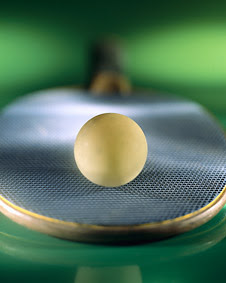If ping-pong balls can float a sunken boat, they should be able to keep an uncrewed space capsule simulator from sinking.
That's what a team of summer students and engineers think at NASA’s Langley Research Center in Hampton, Va. Langley is fabricating a proposed design of an astronaut crew module simulator for uncrewed flight-testing as part of the agency's effort to build a vehicle to replace the space shuttle.
Because the crew module will not be pressurized during the test, it will not have the buoyancy of a pressurized spacecraft. This puts the simulated crew module at risk of sinking to the bottom of the Atlantic Ocean after splashdown.

"At first we didn't really realize that we were going to get so far in proving that it would be possible," said Kirk, a Suffolk, Va., native attending Virginia Tech as an aerospace engineering major. "But when we thought about everything logically, it just seemed like ping-pong balls were the way to go."
She and a team of seven other students worked the project in Langley's Mechanical Systems Branch, where they were assigned for the summer.
DiNonno got the idea from a Discovery Channel program about raising a sunken boat using 27,000 ping-pong balls.
Engineer David Covington said that when DiNonno suggested the ping-pong ball idea, "I just laughed. Not a 'what are you thinking' kind of laugh, but more of a 'that's the most awesome thing I've heard in a long time' laugh. I asked him 'are you serious?' and he said 'yeah, we're authorized to do a four-week study.' So we went straight to work."
That's what a team of summer students and engineers think at NASA’s Langley Research Center in Hampton, Va. Langley is fabricating a proposed design of an astronaut crew module simulator for uncrewed flight-testing as part of the agency's effort to build a vehicle to replace the space shuttle.
Because the crew module will not be pressurized during the test, it will not have the buoyancy of a pressurized spacecraft. This puts the simulated crew module at risk of sinking to the bottom of the Atlantic Ocean after splashdown.

"At first we didn't really realize that we were going to get so far in proving that it would be possible," said Kirk, a Suffolk, Va., native attending Virginia Tech as an aerospace engineering major. "But when we thought about everything logically, it just seemed like ping-pong balls were the way to go."
She and a team of seven other students worked the project in Langley's Mechanical Systems Branch, where they were assigned for the summer.
DiNonno got the idea from a Discovery Channel program about raising a sunken boat using 27,000 ping-pong balls.
Engineer David Covington said that when DiNonno suggested the ping-pong ball idea, "I just laughed. Not a 'what are you thinking' kind of laugh, but more of a 'that's the most awesome thing I've heard in a long time' laugh. I asked him 'are you serious?' and he said 'yeah, we're authorized to do a four-week study.' So we went straight to work."
No comments:
Post a Comment